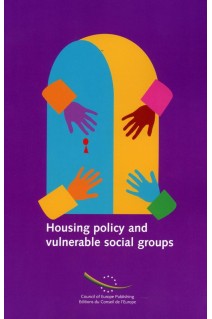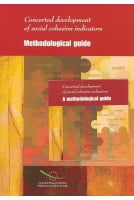



1. Introduction: objective of the report
2. Housing policy context
2.1 . Main trends in housing policies
2.2. Trend from general to specific programmes
2.3. Governance of social housing
3. Housing policy instruments improving access to housing of vulnerable social groups
3.1 . Definition of vulnerable groups
3.2. Obstacles to housing of vulnerable groups
3.3. General framework of policy instruments
3.4. Supply of affordable housing (supply-side subsidies)
3.4.1 . Capital grants on the supply side
3.4.2. Tax credit to support the supply of affordable
3.4.3. Techniques to enhance mixed neighbourhood formation
3.4.4. Interest rate subsidies
3.4.5. Guarantees and insurance
3.5. Access to housing finance (demand-side subsidies for owner occupation)
3.5.1. Capital grants, cash subsidy
3.5.2. Shared ownership, equity loan
3.5.3. Contract saving systems for housing
3.5.4. Guarantees
3.5.5. Interest rate subsidy
3.5.6. Tax exemptions and affordable housing
3.5.7. Housing support for home buyers
3.5.8. Land provision - assisting self-help housing
3.5.9. Ready-built housing for low-income households
3.6. Housing allowances (demand-side subsidies)
3.6.1. Design of the formula
3.6.2. Eligibility criteria: targeting
3.6.3. "Shopping" incentive and inflationary effects on rents
3.6.4. Minimum standards
3.6.5. Poverty trap
3.6.6. Housing allowances and social segregation
3.6.7. Financing the costs of the programme
3.6.8. Administration of the housing allowance
3.6.9. Demand-side or supply-side subsidies?
3.7. New directions of social housing in transition countries
3.7.1 . Housing allowances and support to low-income
3.7.2. Rental programmes
3.7.2.1. Local government programmes
3.7.2.2. The non-profit housing association
3.7.2.3. Public-Private Partnership -programmes
3.7.3. Social programme in the owner-occupied sector
3.7.4. Housing areas and segregation
4. Conclusion
4.1. Basic trends
4.2. Definition, size and evaluation of the subsidy
4.3. Evaluation of subsidy programmes
4.4. Institutional options: governance
5. Dimensions of evaluation
5.1. Measurement of targeting
5.2. Institutional design
5.3. Long-term effects
5.4. Nature of measure
5.5. Tenure structure
5.6. Integration
5.7. Piloting
5.8. Vulnerable groups
5.9. Understandability of the programme
5.10. Behaviour of the target group
5.11. Continuity
5.12. Acceptance of the programme
6. Recommendations
7. Appendices
7.1. FEANTSA definition: Homelessness and Housing Exclusion
7.2. Composition of the Group of Specialists CS-HO
7.3. Guidelines on access to housing for vulnerable groups
7.4. References





Attention, en vertu de nos conditions générales de vente, l'achat des PDF/epub est réservé aux particuliers.
